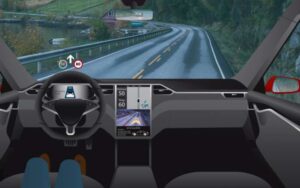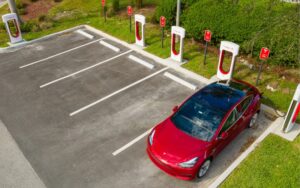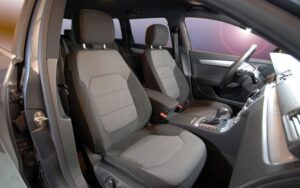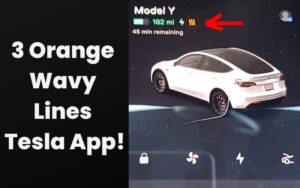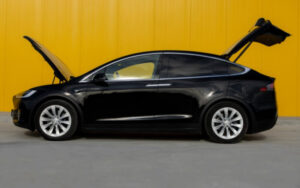9 Possible Reasons Your Tesla is Squeaking! (Silence The Squeak)
Tesla electric vehicles are prominent for their cutting-edge technology and sustainability. However, these cars, like others, experience occasional quirks and concerns.
An issue that continually plagues Tesla owners is the occurrence of squeaking sounds in their vehicles. These noises from different parts of Tesla cars have sparked curiosity.
You may have wondered, too, the reasons for the squeaking noises in your Tesla vehicle. Well, you have the answers to your questions here, finally.
Squeaking sounds in Tesla vehicles arise mainly from parts rubbing against one another. When metallic parts of cars lack sufficient lubrication, they rub against themselves and cause high-pitched squeaks. Squeaking sounds can also result from debris lodged in some parts of the vehicles, like the window seals and tracks. Understanding these underlying factors can help Tesla owners resolve the issues.
In this article, we’ll examine the reasons behind the squeaking noises in Tesla vehicles. We’ll also explore possible fixes for these issues.
Reasons Why Tesla Is Squeaking?
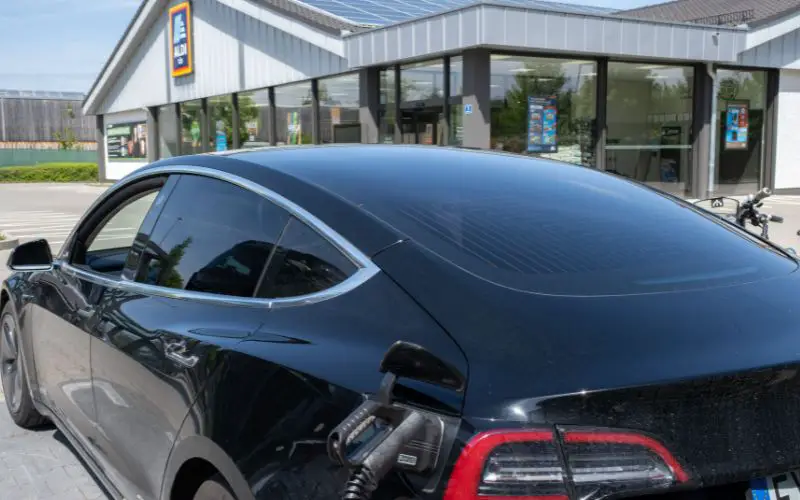
There are several reasons why a Tesla can experience a squeaking sound. These factors are mainly the results of damaged or worn-out parts.
The following are the more common causes of these noises emanating from these vehicles:
#1. Worn or Damaged Suspension Components
Damaged or worn suspension components such as control arms, bushings, and ball joints can cause squeaking sounds in a Tesla.
Damages to these parts result from the accumulation of normal wear and tear. The noises are more noticeable when you drive over bumpy surfaces.
#2. Faulty Wheel Bearings
Faulty wheel bearings are common reasons for a Tesla squeaking. These parts support the wheels during rotation and generate grinding sounds when worn or damaged.
#3. Damaged Door Seals
Squeaking sounds can also result from damaged door seals or weather stripping. Wearing, cracking, or misaligning these components over time leads to friction and squeaking.
#4. Belt or Pulley Misalignment
Misaligned belts or pulleys in Tesla can also cause it to squeak. This misalignment can result from damaged parts, worn or stretched belts, or improper installation.
#5. Worn-Out Shock Absorbers
Shock absorbers reduce impacts and vibration from roads. Over time, they wear out and lead to squeaking sounds when you drive over bumpy roads or potholes.
#6. HVAC System Issues
Squeaking sounds can also result from a Tesla’s HVAC system.
This system contains components such as blower motors and fan belts. When these parts wear out, they generate noise during operation.
#7. Transmission Issues
Issues with a Tesla’s transmission or drivetrain can cause the vehicle to squeak. These problems include damaged gears and worn-out bearings or clutch components.
Damaged transmission components generate noise during acceleration, deceleration, or gear shifts.
#8. Brake-Related Issues
Brake issues are the most typical cause of squeaking sounds in vehicles. Worn-out brake pads cause friction and generate squeaks when braking.
#9. Steering System Issues
Issues with a Tesla’s steering system can cause the vehicle to squeak. A damaged steering rack or loose tie rods are the main culprits in this case.
The above factors are the prime reasons for a squeaking Tesla, and they all relate to wear and tear damage.
However, you can’t tell which one is responsible for the noise in your vehicle.
Therefore, it is necessary to consult a Tesla service center for a precise diagnosis of the problem.
They will diagnose the issue and provide the necessary repairs or replacement of affected parts.
How Do You Fix a Squeaky Tesla?
To fix a squeaky Tesla, you must identify the noise’s source and address it accordingly.
The following are some steps you can follow to get rid of this menace:
#1. Identify the Source of the Sound
This step is the first in fixing a squeaky Tesla. Listen carefully to the noise to determine where it is coming from. Pay particular attention to the brakes, suspension, and other interior components.
You can diagnose the noise source or consult the Tesla service center or other professionals.
Diagnosing your vehicle problems yourself has pros and cons, as does a professional check.
The table below compares the two methods:
| Checking by Yourself | Professional Diagnosis |
|---|---|
| You may not be able to determine the source of the noise precisely | Precisely determine the origin of the issues |
| Is free | May incur charges, especially from non-Tesla service centers |
| You may still need to take it for professional repairs after ascertaining the problem | Repairs and services follow the diagnosis |
#2. Lubrication
In many cases, squeaking sounds in a Tesla arise from friction between two moving parts. Consider applying a lubricant – preferably a silicone-based lubricant – to these areas.
#3. Check and Tighten Loose Components
Check for loose and worn-out components. These parts can cause squeaky sounds too. Tighten such parts when you find them.
#4. Replace Worn-Out Brake Pads
Squeaking noises are usually indicators of worn-out brake pads in Tesla vehicles. Inspect these components for wear and replace them if necessary.
#5. Inspect the Tires
Check your tires for wear and damage, as these tire-related issues can cause squeaks. Replace them if need be.
#6. Inspect Suspension Components
Check your vehicle’s suspension components for wear, such as the control arms, bushings, and ball joints. Lubricate them regularly and replace damaged ones.
#7. Replace Damaged Drivetrain
Check gears, bearings, or clutch for damage. Lubricate these parts regularly and replace them if they are faulty.
#8. Listen for Other Sounds
Other sounds or vibrations may accompany the squeaking noise. These sounds are usually indications of other issues.
For instance, rattling and grinding sounds may indicate loose components and other mechanical problems.
Tell the service center your observations to enable them to diagnose the problem.
#9. Consult Tesla Service Centers or Other Professionals
It is best to schedule an appointment with a Tesla service center if you cannot resolve the issue. They specialize in addressing issues related to Tesla vehicles.
Also, fixing a squeaky Tesla may involve replacing damaged parts which you may be unable to do. Professionals can easily carry out repairs and part replacements.
Furthermore, ensure to take your vehicle for routine maintenance. These regular services will prevent damage to the car parts and reduce squeaking issues.
Tesla Squeaking When Turning Steering Wheel
Several factors can make Tesla squeak when you turn its steering wheel. The reasons for this can be a minor or significant concern.
The main factor responsible for this issue is lubrication. Insufficient or improper lubrication can result in increased friction between its moving parts.
The steering system contains fluid that can leak out and generate squeaking sounds when you attempt to turn the wheel.
To prevent this problem, you must thoroughly inspect and lubricate the moving parts of your steering system regularly.
Another factor responsible for squeaking sounds during steering is worn or damaged steering rack mounting bushes.
These components wear out after some time and lose their stability and impact-absorbing ability. When this issue occurs, they generate clicking, popping, or squeaking sounds.
Furthermore, foreign materials or debris in the steering system can cause squeaking sounds too.
When you turn the wheel, these objects lodge in the system and rub against its components.
You can resolve the issue by cleaning the steering system and removing foreign material.
Suppose you can’t determine why your car squeaks when you turn the steering wheel; take it for a steering inspection.
This exercise includes a test drive to identify the exact source of the noise.
Why Are My Tesla Brakes Squeaking?
It is difficult to determine why your Tesla brakes are squeaking without proper inspection by qualified personnel. Nevertheless, here are common reasons for such issues.
#1. Worn or Thinning Brake Pads
Squeaking brakes often result from worn-out brake pads. Over time, these parts wear out due to friction and cause noises.
Tesla equips its vehicle brake pads with wear indicators. These indicators are thin metal strips that rub against the rotor and squeal when the pads wear down.
The sound is an indicator that the brake pads require replacement. Therefore, you should contact Tesla service for solutions once you get these noises from your brakes.
#2. Dust or Debris on the Brake Rotor
Another factor responsible for squeaking brakes is the presence of moisture, dirt, or debris on the brake rotors. This situation results when your car sits and collects dust over a long period.
The debris usually goes away on its own after you apply the brakes a few times. However, you may need to take care of it with a quick spray using a cleaner.
#3. Your Braking Style
When you brake repeatedly hard and fast, it’s normal to get a squeaking sound. This pattern of breaking can also generate heat and glaze the surfaces of your brake pads.
These are just a few of the many reasons why your Tesla brakes squeak. Consult a certified Tesla service center to diagnose and resolve the issue accurately.
Why is Tesla Window Squeaking?
A squeaking Tesla window indicates an underlying issue that needs attention. One or more of the following can be responsible for noises in Tesla windows.
#1. Worn Window Seals
Window seals maintain tight seals and reduce noise. When they wear out or become damaged, it results in friction and squeaking sounds when closing or opening a window.
You may need to replace worn or damaged window seals to resolve this issue.
#2. Insufficient Lubrication
Insufficient lubrication is another reason for squeaking windows. Window components like racks, hinges, and rollers need proper lubrication.
You can eliminate squeaking by reducing friction through the application of silicone-based lubricant.
#3. Dirt and Debris
Dirty and debris accumulating on window seals and tracks over time results in squeaking sounds. The squeaking noise is a result of the friction that this buildup causes.
You can alleviate this issue by regularly cleaning and maintaining window seals and tracks.
#4. Window Misalignment
An improper window alignment with its frame will rub against surrounding components. This situation, in turn, will lead to squeaking.
It is advisable to contact a Tesla service center for further inspection if the issue persists despite essential maintenance efforts.

Hey, I’m Michael Davis, a 35-year-old with a degree and a love for cars and tech. Since I was a kid, cars have been my thing—so much that I even thought they ran on magic beans! Fast forward, and I’ve built Vehicle Army, your one-stop-shop for easy-to-understand car facts.

